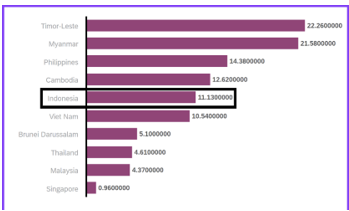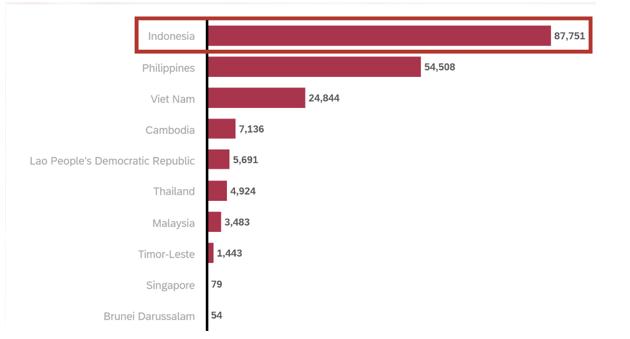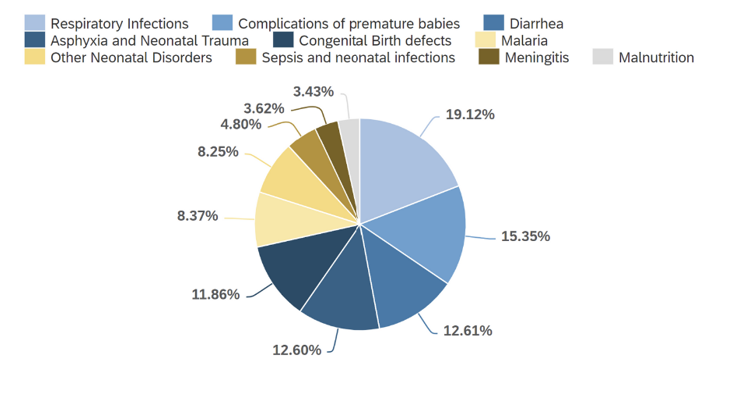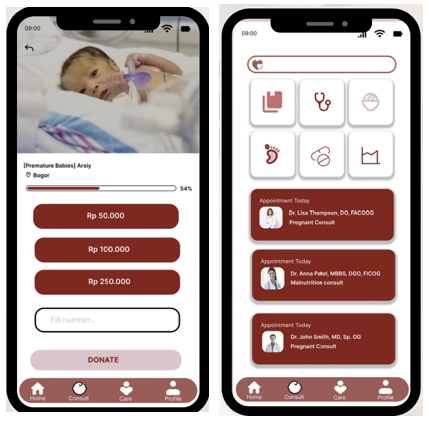Optimizing Maternal and Infant Health: Reducing Premature Births to Reduce Infant Mortality
We chose the SDG theme no.3 which is Good Health and Well Being and chose the problem from the title Optimizing Maternal and Infant Health: Reducing Premature Births To Reduce Infant Mortality. The problem of infant mortality is one that often occurs due to premature birth. Based on articles we have found, around 152 billion babies are born prematurely and 80% of premature babies die because they come from poor countries. According to the World Health Organization (WHO), in developing countries babies born 2 months earlier die due to lack of money and facilities. The purpose of this problem that we want to solve, we want to achieve the target of SDG no.3 which is target 3.2 End All Preventable Deaths Under 5 Years of Age.

Based on the results of the data that we have created using SAP, we can conclude that the highest ASEAN country experiencing neonatal mortality in 2021 is Timor-Leste at 22.2%, while Indonesia entered the 5th largest rank by reaching 11.1%, the other countries that entered the top 5 were Myanmar, Philippines and Cambodia. We can conclude that the countries that have the highest newborn mortality rates are dominant to developing countries. In 2021, infant mortality data from WHO, Indonesia ranked first in ASEAN countries reaching up to 87.7% while Brunei Darussalam became the ASEAN country with the lowest infant mortality rate of only 0.54%. This is likely due to the lack of equitable infant care facilities to remote areas in Indonesia, and some areas still lack food and other economic needs.

The cause of infant mortality can be seen from the data collection that we have made through SAP and the dataset that we took from the databox. Based on the results of this data Respiratory Infections get the first rank which reaches 19.12% which is the cause of infant mortality in the world, followed by Complications of Premature Babies getting the second rank which reaches 15.35% and the third rank by Diarrhea which reaches 12.61%. From these results we chose Complications of Premature Babies to be the solution to our problem.

We also analyzed how big or how many premature babies in Indonesia. According to WHO, premature babies are babies who are born with low body weight, so we collected data from babies born with low body weight using SAP. Based on the results of the data, there are still several provinces that experience the birth of premature babies, Central Java reached 39.00% which is the highest in Indonesia. The results of this data strengthen our analysis that premature babies in Indonesia need further attention.

We provide a solution by creating an application called Maternova. This application has 2 main features, namely Action for Newborn which is intended for some premature babies who lack funds or lack of facilities, they will get online donations from the feature. And our Health Service is aimed at pregnant women by paying attention to diet, and nutrition as well as health information about baby growth and development.

In conclusion, by reducing infant mortality through reducing premature births, we know the areas that still lack health facilities, as well as areas where food needs are still lacking, so we can sensitize the community and the government to work together. As well as spreading warnings to the community to maintain health to pregnant women to maintain a balanced diet and nutrition. If these two things can be done well, there will be no population decline in the world.
References :
- https://www.who.int/news-room/fact-sheets/detail/newborn-mortality
- https://databoks.katadata.co.id/datapublish/2019/09/18/10-penyebab-utama-kematian-balita-di-dunia
- https://databoks.katadata.co.id/datapublish/2019/09/18/10-penyebab-utama-kematian-balita-di-dunia
- https://databoks.katadata.co.id/datapublish/2021/04/26/kematian-anak-indonesia-tinggi-capai-293-ribu-pada-2019
- https://databoks.katadata.co.id/datapublish/2022/11/22/angka-kematian-bayi-neonatal-asean-indonesia-urutan-berapa
- https://www.bps.go.id/id/statistics-table/1/MjIxNiMx/angka-kematian-bayi-akb–infant-mortality-rate-imr–menurut-provinsi—1971-2020.html
- https://www.who.int/news-room/fact-sheets/detail/preterm-birth
- https://data.unicef.org/resources/data_explorer/unicef_f/ag=UNICEF&df=GLOBAL_DATAFLOW&ver=1.0&dq=IDN.CME_MRY0T4.&startPeriod=1970&endPeriod=2024
- https://opendata.majalengkakab.go.id/dataset/jumlah-ibu-hamil-penderita-kurang-darah-anemia-berdasarkan-kecamatan-di-kabupaten-majalengka
- https://jateng.bps.go.id/indicator/30/378/1/jumlah-bayi-lahir-bayi-berat-badan-lahir-rendah-bblr-bblr-dirujuk-dan-bergizi-buruk-menurut-kabupaten-kota-di-provinsi-jawa-tengah.html https://www.who.int/news-room/fact-sheets/detail/newborn-mortality
- https://jatim.bps.go.id/statictable/2023/07/24/2980/-jumlah-klinik-pratama-posyandu-polindes-menurut-kabupaten-kota-di-provinsi-jawa-timur-2021-dan-2022.html
- https://www.who.int/data/gho/data/indicators/indicator-details/GHO/number-of-infant-deaths
by : Naswa Winagati (2602195060) & Pingkan Rohayati (2602087421)

